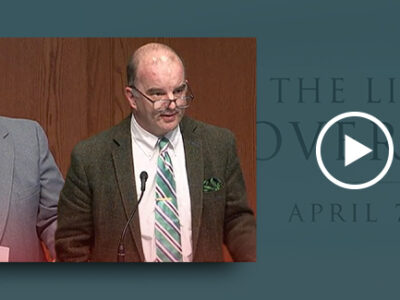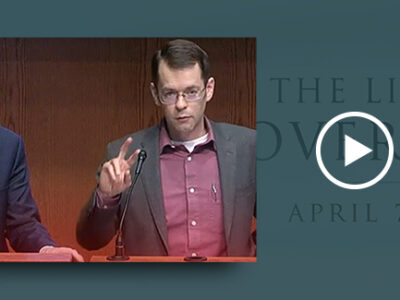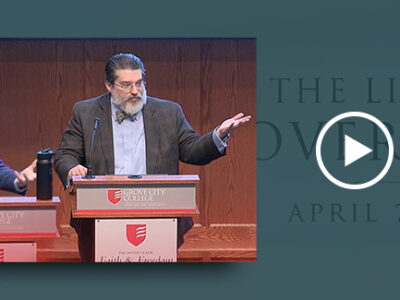Of late, every time ex-minister Ted Haggard speaks, he brings the issues of homosexuality, religion and psychotherapy into the national spotlight.
Stepping into this discussion is one of the most influential and innovative psychologists in the nation, Dr. Nicholas Cummings. Past president of the American Psychological Association, Dr. Cummings practiced psychotherapy in San Francisco, California for 44 years. He helped forge a foundation for modern psychological practice in his 20 years as Chief of Mental Health with the Kaiser-Permanente Health Maintenance Organization. In 1985, Dr. Cummings founded American Biodyne, the first managed behavioral health care company and he continues to be a leading figure in the practice of psychology.
As Chief of Mental Health with Kaiser-Permanente, Dr. Cummings had oversight of 39 hospitals and nearly 600 psychotherapists of all professional backgrounds. In this position, he helped develop interventions and procedures to address the full range of clients and mental health concerns, including homosexual clients. Practicing in San Francisco for much of his career, Dr. Cummings responded to an influx of homosexuals who migrated to the city over the years.
In his clinical work, Dr. Cummings became known for his sensitivity to homosexual concerns. In 1959, Kaiser-Permanente, with Dr. Cummings’ leadership, became the first employer in the nation to hire an openly gay therapist. Working in San Francisco, the HMO saw large numbers of homosexual clients for the usual problems that bring clients to counselors. Dr. Cummings said, among the 2.5 million people covered by Kaiser-Permanente, “We did not see any more mental health problems than we did in a straight population, and for some problems (violent behavior, sociopathy, criminality) it was a lot less than the straight population.”
Regarding clients with conflicts over homosexuality, Dr. Cummings estimates that he personally conducted therapy with over 2,000 such men and women in his career. Furthermore, he estimates that Kaiser-Permanente provided services to a cohort of as many as 16,000 clients who had conflicts over their sexual identity during his tenure there. Recently, in an interview, he described the approach developed at Kaiser-Permenente which was used with clients who experienced Haggard-like conflicts over their homosexuality.
Dr. Cummings observations are especially pertinent. He does not speak from an ideological position; he speaks from clinical experience with a remarkably large group of clients, perhaps the largest ever described.
In therapy, one of the first tasks was to learn more about the client’s experience of same-sex attraction. Through his clinical experience, Cummings came to believe there are many kinds of homosexuality. He notes,
“There are as many kinds of homosexuals as heterosexuals. Homosexuality is not a unitary experience. Some gays were quite promiscuous in response to a chaotic upbringing; some had wonderful families. Some were very conforming with traditional gender roles and others were not. For instance, with male clients, we found that men who were quite feminine from an early age were not good candidates for change and we didn’t pursue that. Instead, in many cases, we helped clients develop happier and saner gay lives.”
Regarding the intense debate over nature and nurture, Dr. Cummings said that it is a mistake to isolate one cause for all homosexuals. “We saw people with all kinds of backgrounds. Dogmatism about causes is unwarranted by current research on the subject which is complex. In addition, our clinical experience contradicts efforts to reduce homosexuality to one set of factors.”
Therapists at Kaiser developed means to help clients pursue their values and desires in an informed manner. “Over time, we were able to identify within 4 or 5 sessions which clients were likely to pursue change and which ones were not.” Cummings learned that clients most likely to change attractions either had a strong, internalized value system which contradicted homosexual behavior or they developed a homosexual adaptation through a childhood of abusive life experiences. Those with no prior heterosexual inclination and those with a longer history of same-sex attraction were not as likely to develop heterosexual adaptation.
Success was not measured by whether a client changed sexual orientation. In fact, the number of clients who changed was relatively low. However, Dr. Cummings recalls that the majority of homosexual clients had positive results. He explains:
“Of the universe of gays we saw in Kaiser, 67% had good outcomes. Of those, 20% were successful in reorientation, with the remaining 80% pursuing sane, sexually responsible gay lives. The other third of our clients were not helped much at all. This was a much higher failure rate than for other problems. These people seemed to be sexually compulsive, frequently with obsessive compulsive disorder and substance addictions. There was an addictive quality to their behavior. They could not seem to go a day without sex. We tried many things and nothing seemed to work.”
Thwarting the polarization that marks so much of the cultural discussion on sexual reorientation, Cummings suggests that most clients may not be able to change dramatically, if at all, but at the same time, change for some clients is possible. Using the numbers above, roughly 13% of those in conflict over their homosexuality demonstrated a shift toward a heterosexual life.
He adds, “Clients ultimately set goals of therapy with consultation from therapists.” Cummings recalls, “I still get notes and Christmas cards from clients who are married and very appreciative of their work in therapy. I am also contacted by even more clients who thank me for helping them achieve happy, long-term gay relationships.”
Currently, Dr. Cummings is concerned that some advocates distort research to promote a more political agenda. He has been a vocal critic of his own APA because the association has discouraged even the potential for shifts in sexual attractions despite a slim and contradictory research basis for their position. On the other hand, he does not believe the alternative is to re-cast homosexuality as a disease that requires treatment. He explains,
“Given the state of research, the APA should not reject the possibility that sexual orientation might be flexible for some nor should those who are opposed to homosexuality contend that all gays can or should try to change their attractions. Therapists should be prepared to work within the viewpoint of their clients, even if that means clients desire to align their sexual feelings with their deeply held beliefs.”
Dr. Cummings observations match up quite well with my experience and reading of the science. Current research does not allow dogmatism about what causes homosexuality or how flexible it might be for any given person. However, we can help clients live consistently with their core values and beliefs, whatever they may be. Thus, the guidance of therapists should be tentative and individually applied. It should not be surprising that a “one size fits all” approach to therapy is especially inappropriate in an arena where values, sexuality and personal identity intersect.




